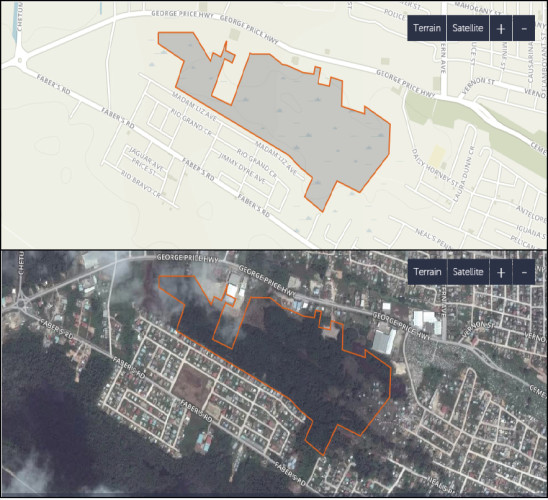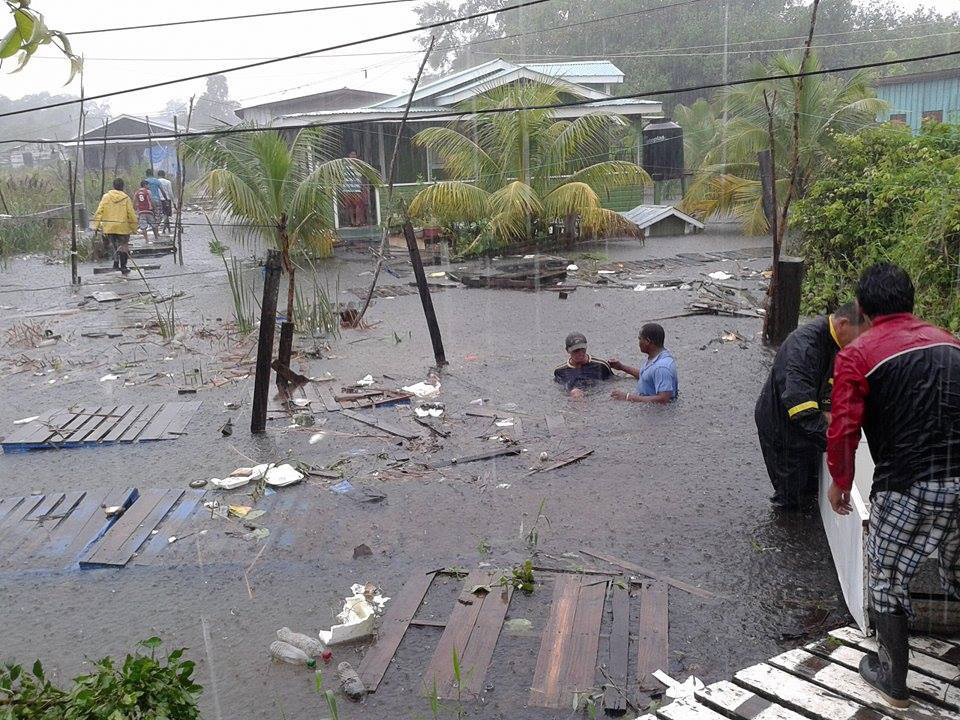Belize is identified regionally as one of the countries undergoing rapid urbanization with the third highest urban population growth rate in Latin America and the Caribbean (LAC), that is, 3.1 percent per annum between the period 2005 and 2010.[1] This urbanization process is increasing the demand for land and other urban services in existing urban centers (two cities, Belize City and Belmopan; and seven (7) towns) among prevailing conditions of lagging local economic development, inadequate housing and infrastructure, increasing poverty and crime rates and environmental degradation.
Furthermore, Belize is also recognized as one of those countries most vulnerable to the adverse impacts of Climate Change.[2] Considering that 64% of Belize’s urban population resides on the coast, of which 39% reside in Belize City, the country’s largest urban area and economic hub, urban communities are significantly exposed to impacts from a changing climate such as sea level rise and intense weather events including storms and hurricanes.
Escalating pressures from population growth and the compounded effects of a climate change coupled with socio-economic challenges such as high poverty rates (43%)[3] exposes many of Belize’s urban communities as acutely vulnerable and requiring urgent attention and intervention if they are to pursue a more sustainable and resilient future.
Krooman Lagoon is an increasingly threatened urban ecological space located on the southside of Belize City in the Collet constituency and is surrounded by the several communities namely, Fabers Road Extension, a portion of the Western Highway and the Antelope Street Extension. The importance of the area as a wetland habitat and important water catchment area for the city has long been recognized prompting the designation of the Krooman Reserve as a public reserve under the National Lands Act in October 2007.[4]
The reserved area comprises approximately 57.8 acres and the Lands and Surveys and the Forest Departments have responsibility for its management. Since its designation, there have been several concrete threats to the area. In 2009, approximately 9 acres of the reserve was sold to a Belize City business man who commenced land reclamation in the portion of the reserve that was sold to him; the sale was subsequently revoked due to public pressure.
Following the controversy, the government of Belize indicated that the area would remain as a reserve and any developments would be in accordance with the master plan of the Southside Poverty Alleviation Project, which proposes that the area be made into an attractive nature reserve while creating employment and self-sustaining activity community residents.[5]
Such plans have not yet been realized and recently the area has again been controversially featured in the news. Firstly in July, 2014, Belize’s Channel 5 aired a story that described how a portion of the reserve has been captured by squatters, who have built their homes, and begun to occupy the area.[6] More recently, in October 2015, after a weekend of usually heavy rainfall which flooded Belize City, Krooman Reserve was again brought to the public’s attention as the squatter settlements and surrounding community were among those areas most impacted by the flooding both due to proximity to the lagoon and the high incidence of poverty among residents.[7]
The intensity of this flood event also drew attention to the issue that unplanned and unregulated development threatens the natural drainage systems in the Belize City and in the immediate as well as in the longer term can amplify the impacts of natural hazards.


 In the Krooman Reserve and surrounding community, the convergences of issues such as very high poverty rates and other socio-economic challenges; unplanned and unregulated growth and development; indiscriminate land filling and environmental degradation; inadequate and unsound housing and infrastructure; the compounded effects of climate change impacts; and weak, deficient and archaic policy, legislative and institutional capacity and political will to sustainably manage growth and development in these areas; demands urgent attention from a comprehensive approach that take into account pre-existing, changing and emerging conditions of the climatic, political demographic, socio-economic and cultural characteristics of people and of landforms and the environment.
In the Krooman Reserve and surrounding community, the convergences of issues such as very high poverty rates and other socio-economic challenges; unplanned and unregulated growth and development; indiscriminate land filling and environmental degradation; inadequate and unsound housing and infrastructure; the compounded effects of climate change impacts; and weak, deficient and archaic policy, legislative and institutional capacity and political will to sustainably manage growth and development in these areas; demands urgent attention from a comprehensive approach that take into account pre-existing, changing and emerging conditions of the climatic, political demographic, socio-economic and cultural characteristics of people and of landforms and the environment.